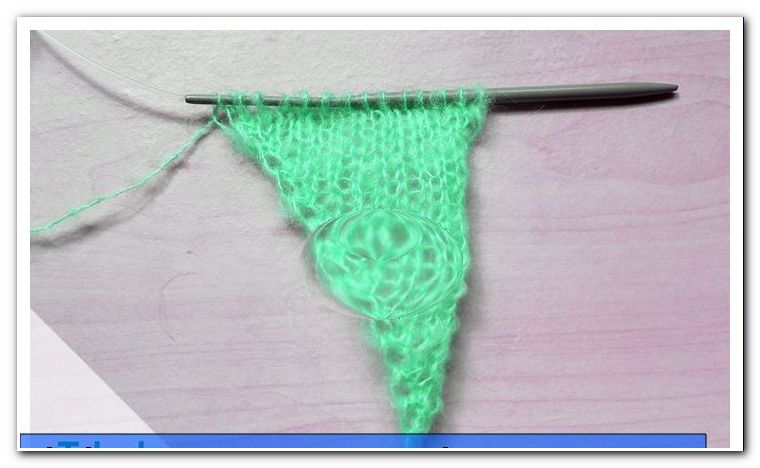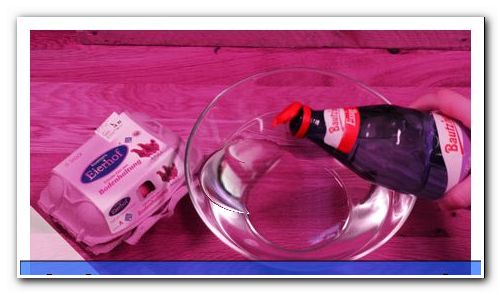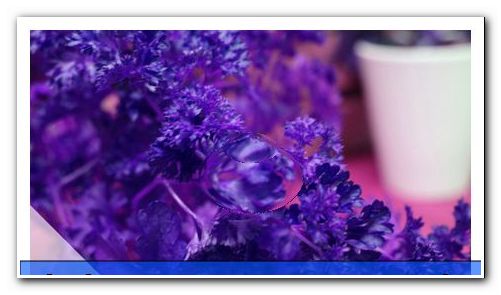Remove scratches from glossy fronts: how it works! | manual

- Remove scratches from glossy fronts
- 1. The underground
- 2. The depth
- Scratch-free high-gloss fronts
- Tools
- Instructions | Remove scratches
- Unsuitable polishing additives
Whether kitchen, sideboard or wardrobe - high-gloss fronts are in line with the latest trends in every piece of furniture and lend each apartment a refined and stylish ambience. However, these surfaces are also very sensitive to a variety of disorders. Even slight scratches are immediately noticeable and increasingly affect the desired look. How to remove these scratches can be found in our guide.
A smooth, shiny surface looks high-quality and noble and can be combined with numerous other materials to form a stylish whole of your own home. The greater the shock, if smaller or larger scratches dull the impression. In particular, high-gloss fronts suffer extremely quickly in their aesthetics from any irritation. So here's a simple guide that will help you quickly remove a variety of scratches.
Remove scratches from glossy fronts
Surface structure and scratch depth
Whether and how a scratch in glossy fronts can be eliminated depends on two key factors.
1. The underground
Most glossy surfaces are made of plastic. The supporting substrate can be formed of a wide variety of materials, with furniture boards for components without visible wood surface having established pressboard boards or MDF boards. This is followed by a plastic coating, which gives the surface the subsequent color. Most of the plastic itself is white and only coated on the surface. The uppermost layer forms a transparent coating also with plastic. It creates the desired shine, but at the same time makes the underlying color visible.
NOTE: In addition, there are other material constructions in individual cases. However, these are usually very special and also individual, so that for these structures in each case to the same extent individual instructions. If the use of a different layer structure is known, the manufacturer usually provides the information required for the product to remove the scratch as a rule.
2. The depth
The less deeply it penetrates the surface, the less effort is required to remove a scratch. If he only intervenes in the transparent layer of gloss, he is less noticeable than if he penetrates the color layer and the white plastic is visible. It is obvious that the necessary measures are based on these different conditions.

Remove scratches in theory
Before the practical implementation, we look together at how to proceed when removing the unsightly scratches, scratches or quirks. No matter how deep and large, any impairment of the surface first goes into the depth of the material. One way to eliminate them would be to fill up the resulting depression. However, this would usually result in transitions, paragraphs or bumps . However, they can not be readily avoided or removed without residue. So the normal way is different.
The use of suitable aids also removes the surface around the scratch until a completely smooth surface is created again. This is commonly known as polishing. On the other hand, if the damage penetrates into the ink layer, it must first be supplemented to subsequently remove the unevenness in the transparent top layer again. In the case of extremely deep scratches, in spite of the high expense in individual cases, filling the notch with suitable transparent fillers can actually be effective.
Scratch-free high-gloss fronts
Step by step to scratch-free high-gloss fronts
Now that the requirements for the removal of the scratches are clear, it goes to the practical implementation.
Tools
Suitable tools and fabrics
Well suited for polishing the very smooth and highly reflective high gloss fronts are the following.
- Chamois leather, ideally made of genuine deerskin
- soft cotton rag
- feather duster
- fine car polish with suitability for metallic paints
- Cockpitspray

If, on the other hand, there is a clear color contrast in the scratch, the color layer is also affected. Then a paint pen in the appropriate color should be added. In the best case, you will receive it from the manufacturer of the piece of furniture. Then the probability of the identical color is greatest. If you do not have access to it, get a pencil in apparently your own color.
TIP: No matter if the paint pen comes from the manufacturer of the furniture or from another source, test the paint beforehand on a test piece and compare it with your glossy fronts. Different batches can easily lead to color variations that you can easily recognize.
Instructions | Remove scratches
1st step - cleaning
Before polishing, the area around the scratches must be cleaned. Otherwise, dust or dirt particles can act like a grain of sand on sandpaper during subsequent polishing and leave additional scratch marks.
- Remove dust from the surface with a duster
- Moisten cotton cloth
- wipe the area to be polished with a damp cloth, while keeping the pressure on the surface low in order not to additionally rub adhering dust and dirt into the surface after loosening
2nd step - pre-polishing
After cleaning, the pre-polishing takes place. It can already remove minimal scratch marks, but at the same time prepares the ground for necessary subsequent steps.
- Moisten the chamois leather
- Pull the leather over the fingertip and rub circularly along the scratch with the "polishing tip" created in this way
- Gradually increase the polishing pressure and check the result regularly

TIP: If the scratches now become less, or even disappear, the process should continue. Usually this simple polish is completely sufficient for very flat scratches. Only if color differences are recognizable or if the scratches are very deep, you should continue with the following steps.
Step 3 - Special Dyeing (only when the ink layer is affected)
If the crack clearly shows a different color, the color layer under the glossy surface is touched. Now the worried paint pen is used.
- Apply paint in scratch direction
- Slightly overlap scratched edge on existing paint on both sides
NOTE: Applying the color to the existing color serves to create a seamless transition between new and old color. If only the actual scratch is painted, light hairlines can be seen in the transition area. These are the breaking edges of the existing paint coating.
4th step - repolishing
After applying the paint, the scratch is polished out. If the color layer is not attacked, this step takes place immediately after the pre-polish and also eliminates deeper interventions in the high-gloss fronts.

- Moisten the chamois leather
- Apply chrome polish or cockpit spray to polishing tip (leather over fingertip)
- polish along the scratch in circular motion
- If necessary, polish again if necessary when polishing
- periodically remove polish and control surface

WATCH OUT! Especially when using polishing additives, the surface can heat up at high pressure of the finger. The movements should therefore be carried out slowly and with pauses. Some glossy surfaces can change their gloss properties if heated too much!

Unsuitable polishing additives
Again and again one reads of the oddest additions, which are supposed to remove scratches.
- toothpaste
- sand
- polishing pastes
- ...

You should definitely refrain from these substances! Reason are the microparticles contained in them. Similar to a dust or dirt grain, you can additionally attack the very smooth surface of the furniture front and leave the finest micro-scratches. Although these may not be recognizable individually, at least the surface will lose its gloss as a result. In contrast, the specified chromium polish was specially tailored to the comparably smooth surface of chromium coatings. Therefore, it does not damage the glossy surfaces of your furniture.




